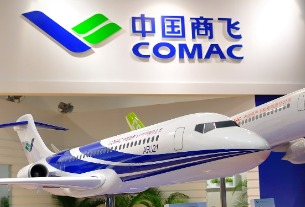Like most international jamborees these days the Farnborough air show wrapped up on July 24th as a virtual event. Webinars featuring grim-faced executives were not as entertaining as noisy acrobatic displays by fighter jets. But commercial aviation’s most important showcase at least marked a point when heads began to turn away from the devastation wrought by covid-19 and towards what comes next.
The airline-industrial complex is vast. Last year 4.5bn passengers buckled up for take-off. Over 100,000 commercial flights a day filled the skies. These journeys supported 10m jobs directly, according to the Air Transport Action Group, a trade body: 6m at airports, including staff of shops and cafés, luggage handlers, cooks of in-flight meals and the like; 2.7m airline workers; and 1.2m people in planemaking. In 2019 they helped generate revenues of $170bn for the world’s airports and $838bn for airlines. Airbus and Boeing, the duopoly atop the aircraft supply chain, had sales of $100bn between them. For the aerospace industry as a whole they were perhaps $600bn. Add travel firms like Booking Holdings, Expedia and Trip.com, and you get annual revenues of some $1.3trn in normal times for listed firms alone, supporting roughly as much in market capitalization before covid-19—and rising.
Taxiing times
Instead, the coronavirus has lopped $460bn from this market value (see chart 1). Airline bosses are reassessing trends in passenger numbers, which had been expected to double in the next 15 years, just as they had with metronomic regularity since 1988, despite blips after the 9/11 terrorist attacks of 2001 and the financial crisis of 2007-09. Rather than increase by 4% this year, air-transport revenues will fall by 50%, to $419bn. After ten years of unusual profitability the $100bn of total losses forecast for the next two years is equal to half the nominal net profits the industry raked in since the second world war, calculates Aviation Strategy, a consultancy. Luis Felipe de Oliveira, director-general of ACI World, which represents the world’s airports, gloomily predicts that revenues there will fall by 57% in 2020.
At the other end of the air-travel industry are airports. About 60% of their revenues comes from charges on airlines and passengers, and the rest from things like retail and parking. All are taking a hit. Airport shops and restaurants in America will lose $3.4bn between now and the end of 2021, forecasts the Airport Restaurant & Retail Association. As Mr de Oliveira of ACI World notes, two in three airports were losing money before the crisis; now all are. Some smaller ones may close if subsidies to support tourism from regional and national governments start to dwindle. Outside America commercial operators have not been treated by governments as generously as airlines have.
Some carriers may radically rethink their financial structures, which could help leasing grow even faster. Domhnal Slattery, boss of Avolon, a big lessor, thinks that heavy debts airlines incur to survive the pandemic may convince many of them that they need not own aircraft but should instead concentrate on sales and marketing, just as hotel chains have turned their backs on owning property.
The industry is also rethinking its environmental footprint. Bolder airlines with stronger balance-sheets may use the crisis to renew their fleets, making them greener. They have bargaining power: everything is negotiable, including deferrals, prepayments and price.
Rolling with the punches
Warren East, boss of Rolls-Royce, suspects that the “pre-covid call for sustainability will come back stronger than ever”. Airbus is still committed to the journey to zero-emissions flying, Mr Faury says; he sees it as an opportunity. Boeing would have to respond to stay competitive. European governments in particular regard it as a priority. France’s €15bn aid package for its aerospace sector includes a €1.5bn research-and-development fund to help Airbus launch a zero-emissions short-haul passenger jet by 2035 (probably powered by either biofuels or hydrogen). Mr Faury accepts that there is less money to invest. But also, he says, “more need”. The crisis has led to greater collaboration with suppliers that could make innovation “faster, leaner and cheaper” (though that has meant laying off 15,000 workers).
China, desperate to become a power in commercial aerospace, may see the disruption as a way to speed up entry into the global market, says Robert Spingarn of Credit Suisse, a bank. He speculates that Brazil’s Embraer, whose merger with Boeing fell apart in April, might collaborate with China’s COMAC to build a plane capable of competing against Airbus and Boeing. The Brazilians could supply the industrial knowhow and the Chinese the industrial might.
To the masked passengers on half-empty planes, boarded from ghost-town airports of shuttered shops, it may seem that the experience of flying will never be the same again. Yet aviation has bounced back before. It is likely to do so again—and may change for the better in the process.
Read original article




